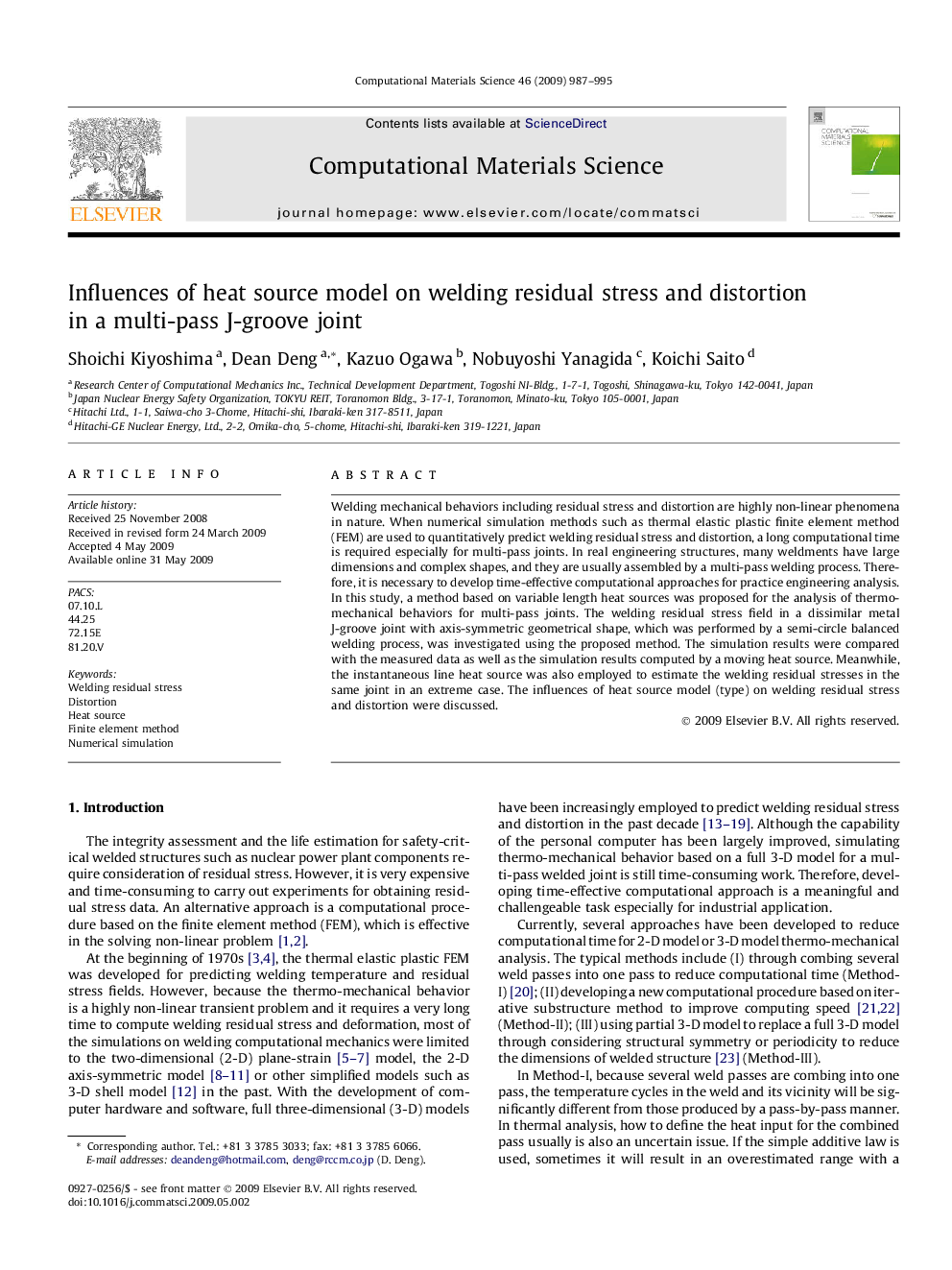| Article ID | Journal | Published Year | Pages | File Type |
|---|---|---|---|---|
| 1563145 | Computational Materials Science | 2009 | 9 Pages |
Abstract
Welding mechanical behaviors including residual stress and distortion are highly non-linear phenomena in nature. When numerical simulation methods such as thermal elastic plastic finite element method (FEM) are used to quantitatively predict welding residual stress and distortion, a long computational time is required especially for multi-pass joints. In real engineering structures, many weldments have large dimensions and complex shapes, and they are usually assembled by a multi-pass welding process. Therefore, it is necessary to develop time-effective computational approaches for practice engineering analysis. In this study, a method based on variable length heat sources was proposed for the analysis of thermo-mechanical behaviors for multi-pass joints. The welding residual stress field in a dissimilar metal J-groove joint with axis-symmetric geometrical shape, which was performed by a semi-circle balanced welding process, was investigated using the proposed method. The simulation results were compared with the measured data as well as the simulation results computed by a moving heat source. Meanwhile, the instantaneous line heat source was also employed to estimate the welding residual stresses in the same joint in an extreme case. The influences of heat source model (type) on welding residual stress and distortion were discussed.
Keywords
Related Topics
Physical Sciences and Engineering
Engineering
Computational Mechanics
Authors
Shoichi Kiyoshima, Dean Deng, Kazuo Ogawa, Nobuyoshi Yanagida, Koichi Saito,
